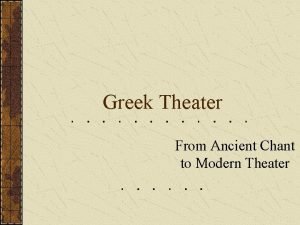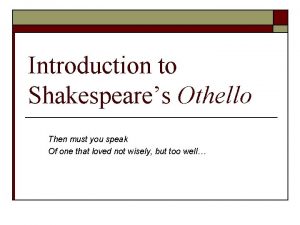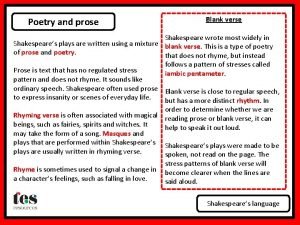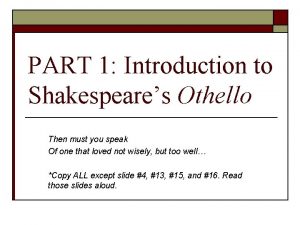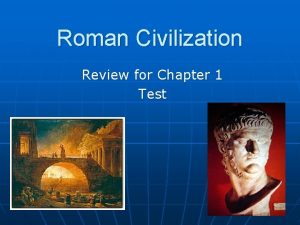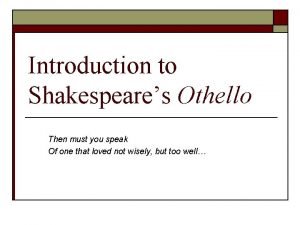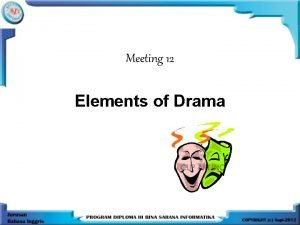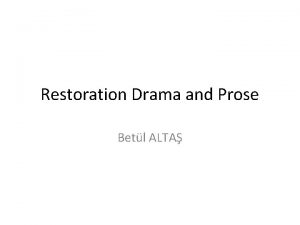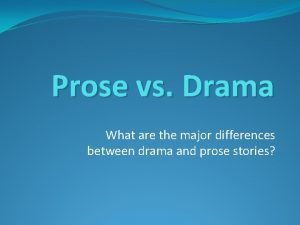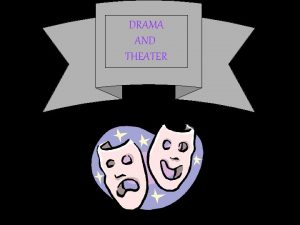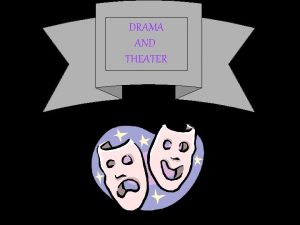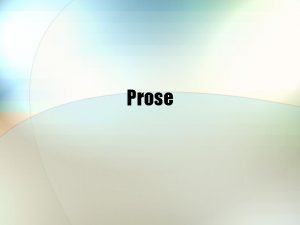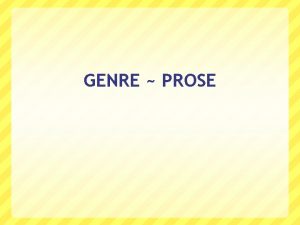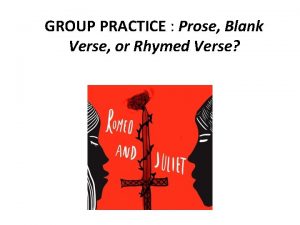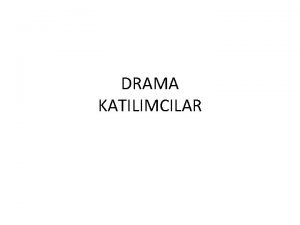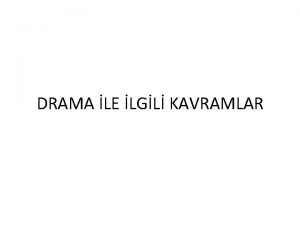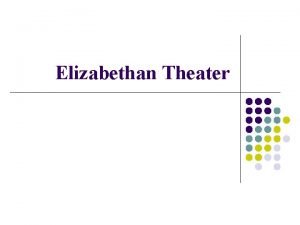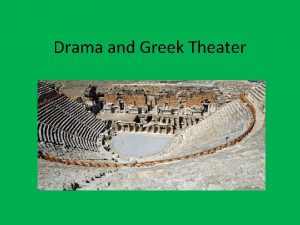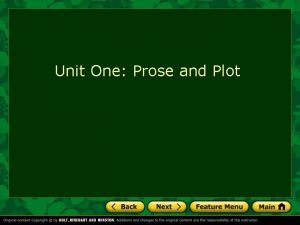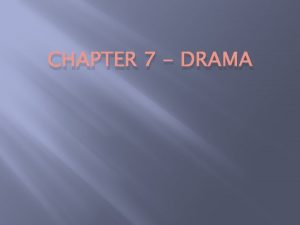DRAMA AND THEATER Drama Prose or verse telling



















- Slides: 19

DRAMA AND THEATER

Drama Prose or verse telling a story intended for representation by actors through dialogue or action.

The Playwright : person who writes plays. Script : printed copy of a play. Acts : the major sections of a play. Scene : small section or portion of a play.

The People Actor: male performer Actress: female performer Cast: all performers selected to portray characters. Director: instructs actors on how to portray characters.

The Theater A building where a play is performed containing the stage and seating area for the audience.

Areas of the Stage Backstage: area behind scenery not visible to audience. Center stage: area in the center of the stage. Downstage: area closest to the audience. Stage left/right: area to actor’s left or right as he/she faces the audience.

Upstage: area furthest away from the audience. Backdrop: painted curtain without fullness. Flats: canvas-covered wooden frames used for scenery. Set: all sets and props that help define the action.

B A C K S T A G E Upstage Stage Right Center Stage Down Stage Audience Stage Left B A C K S T A G E

Stage Directions Cue: something that precedes the next action. Cut: to stop the action. Exit: to leave the stage.

Elements of Drama Plot: the main storyline Theme: the basic idea of the play Character: person, animal or thing in the story

Language: formal setting or dialect Dialogue: conversation between two or more characters. Monologue: one person speaking Spectacle: visuals involved on stage

Costumes: clothing worn by an actor on stage to help represent characters. Props: items used on stage to help actors tell a story

Creative Dramatics Improvisation: to make up or perform without preparation. Pantomime: to communicate without speaking using only facial and body gestures.

Mimicry: to copy or imitate something very closely. Role Playing : to take on the characteristics of someone or something.

A HISTORY OF DRAMA Drama began in ancient Greece dating back to 543 B. C. It started as choral performances of dancing and singing honoring the Greek god, Dionysus, the god of wine.

The Greeks held their dramas in outdoor theaters called amphitheaters, the largest seating 14, 000 people. Theater at Delphi

Types of Greek Drama Tragedy: character is confronted with a difficult moral choice and usually ends in his or her death. Comedy: a humorous entertaining performance with a happy ending.

In Greek drama, the actors all wore masks to help the audience recognize the character they were playing. The “Agamemnon” Mask

550 -534 BC Theater of Dionysos Located at the bottom of the Acropolis in Athens. Skene Orchestra Chorus Proskenion
 Greek theater vs modern theater
Greek theater vs modern theater What is a tragic hero
What is a tragic hero Poet nn
Poet nn Blank verse shakespeare
Blank verse shakespeare Prose vs free verse
Prose vs free verse Prose v poetry
Prose v poetry Free verse poetry does not have
Free verse poetry does not have Works that poke fun at human weakness
Works that poke fun at human weakness Shakespeare often writes in:
Shakespeare often writes in: Free verse vs blank verse
Free verse vs blank verse Free verse vs blank verse
Free verse vs blank verse Free verse vs blank verse
Free verse vs blank verse Verse by verse bible study method
Verse by verse bible study method Watersmooth silver stallion meaning
Watersmooth silver stallion meaning Free vs blank verse
Free vs blank verse Latin scansion examples
Latin scansion examples Free verse
Free verse What are elements of drama
What are elements of drama Restoration drama and prose
Restoration drama and prose How is drama different from prose?
How is drama different from prose?
